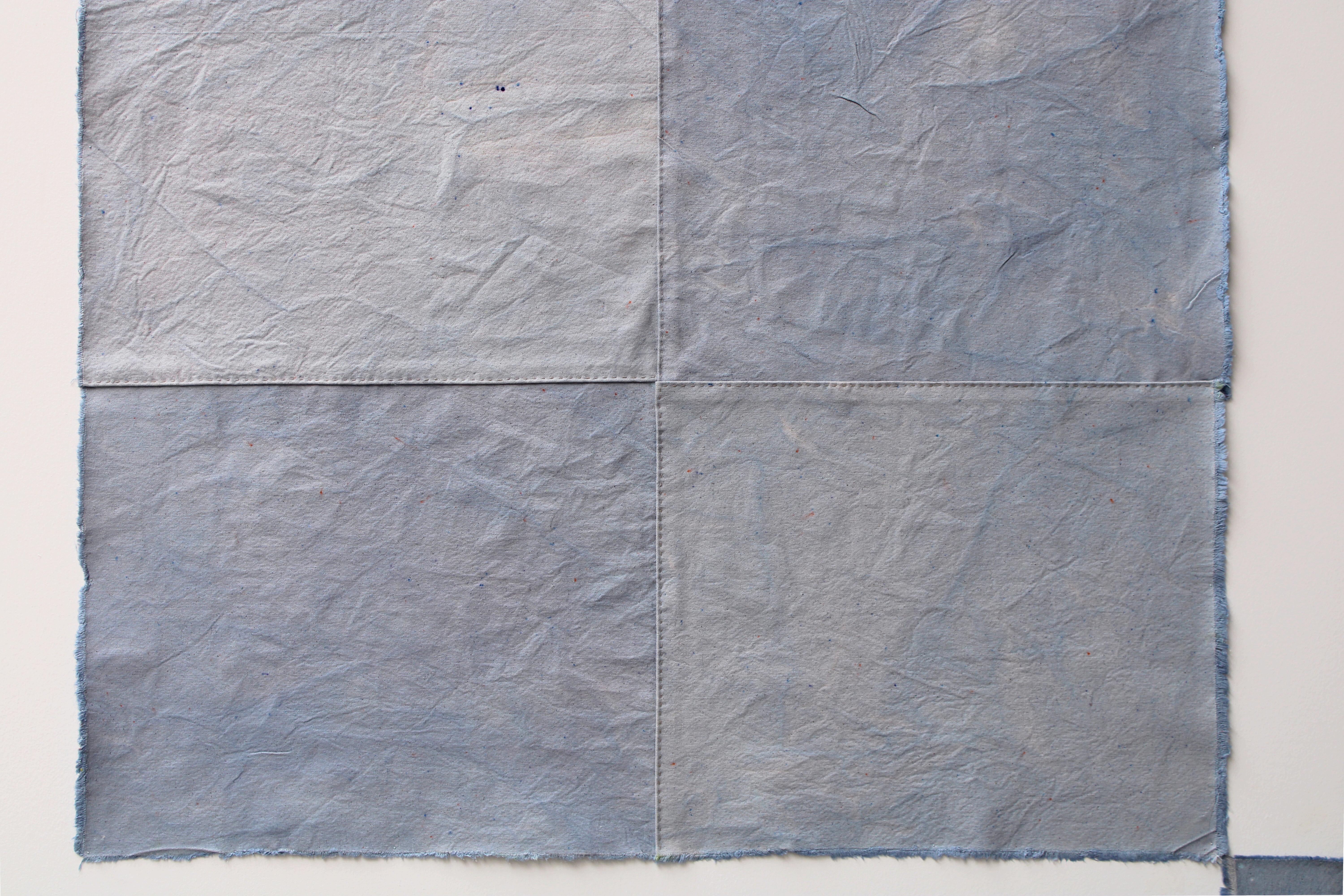

Cover image: CLOUDS (detail), 2024



Cover image: CLOUDS (detail), 2024
January 17 - March 15, 2025



Guerrero-Maciá’s post-disciplinary approach to image-making embraces the rejection of traditional ideas around the division of artistic disciplines Instead, techniques from a variety of methodologies are combined to create a flexible approach for new ideas. With a formal approach to abstract concepts from an art historical direction, these works live at the intersection of pictorial space and textile consciousness. In other words, they are artworks that are yes/and, rather than either/or. They are works of art that don’t check a box; they are not quilted nor painted, they are something else in-between, they are new ideas, as Guerrero-Macia calls them: unpainted pictures.
This new series of patchwork colorfields evolve from traditional designs that date from the early 19th century quilting techniques: the Nine Patch, Flying Geese and Solmon’s Puzzle Using this as a template imbued with an art-historically relevant post-painterly abstraction rigor, GuerreroMaciá’s “paintings” present luscious palettes on seductive tactile surfaces With a keener eye, viewers will note that the dedicated embrace of abstraction explores the lived experience This includes ideas around market consumption, sustainability, and the migration of people that are expressed through color and form. Here, the combination of historical standards with contemporary quandaries strongly suggests that the dynamic between yesterday and today is a fluid reminder that tomorrow is daunting yet exciting.

territory. A key aspect of the work is how the compositions engage with the limitation of scale. The paintings are proportioned to be two-thirds the size of a California king bed. This intentional use of dimension gives the works a human scale, insinuating a direct relationship to the body It is also a formal choice that puts the work in conversation with Robert Rauschenberg and his pivotal work Bed (1955), a composition wherein the artist uses his own well-worn bed linens in place of a canvas In multiple ways, Guerrero-Maciá juxtaposes abstraction with the useful objects of everyday lived experience through which our bodies move Through these kinds of carefully considered formal choices, the works create connections between art and life
This said, Guerrero-Maciá approaches picture-making with an ethos of generosity: the idea that art can be inclusive, giving something different to different people. Her approach to abstraction allows for pleasurable experience of looking whether or not the specific codes of painting are legible to the viewer. The works are always open to interpretation. When we stand before them, they shift our perceptual and sensorial relationships to recalibrate us in the present. In this new body of work, abstraction becomes a tool to create a direct encounter with the realities that structure our present moment both inside and outside the gallery.
Code-switching has long been a strategy for survival. To code-switch is to demonstrate a deep understanding of the code as well as a certain skepticism It is a fluency that acknowledges the constructed nature of language, a signal of mastery while resisting those broader systems you purport to master
Guerrero-Maciá’s ability to code-switch between textile and painting is integral to the critical dimension of her work There is a kind of punk rock defiance in her refusal to let her work be neatly categorized This fluidity is not just formal, but conceptual Such code-switching troubles the hierarchies that have historically devalued textile-based practices, particularly those associated with women and non-Western traditions. Moreover, it activates the multiple lineages and legacies that engage with the consequential operations of pattern, color, and form. Postpainterly abstraction, which names the various mid-century movements that sought to empty abstraction of content in pursuit of a purity or facticity of form, is one such lineage. Yet as Guerrero-Maciá reminds us, early nineteenth century quilting techniques are another. Her ten large-scale patchwork color-field paintings explore these intersections in different permutations, riffing and expanding on core forms and concepts in a way that Guerrero-Maciá compares to songs on an album.
One recurrent pattern in this body of work is flying geese This design mirrors the movement of migrating birds, which fly in an aerodynamic “ v ” shape that allows the group as a whole to conserve energy Each bird flies slightly above the one in front of them, riding the flow of displaced air, and rotating who flies in front In quilting, the movement and formation of the birds is pared down to a simple pattern of triangles This pattern features prominently in PARLEY no 1 (2024) and PARLEY no 2 (2024) in ways that demonstrate the tensions and
between-ness. By refusing categorization, they open up space for something we cannot name.
THE BIG ONE (2024) a standout work in this new series highlights the contradiction between the inscrutable and palpable dimensions of lived experience, inlaying multiple nineteenth century quilting patterns to create an incredibly complex and dynamic composition Smaller iterations of flying geese in blue are inset in an off-kilter nine patch with the top left and right squares replaced with triangles, which creates the sense that the corners are contorted in space A red, textural triangle with a pocket seam and buttonhole bisects one of the squares, while two bottom black squares are elided by intersecting yellow seamed lines Instead of a horizon line at the center of the composition we see a seam, and disrupting the pictorial space is a dangling black and white linear element that is slightly off-center. For the attentive viewer, spending time closely looking at the work will yield a moment of compositional perfection: the dangling linear form hits at the exact point of intersection between the yellow, red, orange, offwhite, and light blue corners.
The title of THE BIG ONE speaks to an apocalyptic event always on the horizon the next big earthquake, fire, tsunami, outbreak, war, market crash, etc. that will be the one to end all others. The title names a relationship to time that runs through not only this composition, but the whole series. The painstaking hand-crafted detail and compositional exactitude requires close attention. The longer you look, the more there is to look at. The works slow us down so as to be present in the moment with them, prompting us to open ourselves to the dense visual and material information they contain Formally, materially, and compositionally, the works demand engagement. Experiencing them entails becoming aware of that which they index of the historical, cultural, economic, and environmental forces their materiality invokes. Can we understand catastrophe while we are in it? Or is the scale of impending crises so vast as to completely envelop us, becoming no more notable or perceptible than the air we breathe? These are the questions the paintings attune us to, and the ethics they unearth in our act of looking.
The title of this new series, PAINTINGS FOR BIRDS, suggests a macroscopic view, a mapping of the forces that hold us in the present from far above the fray. They exude

THE BIG ONE, 2024 a meditative quality reinforced by the salon installation at the center of the gallery, where a viewer can sit on white wrought-iron benches amongst leafy green trees. The salon is dark, evoking a night garden or courtyard and the darkness in which birds migrate. The sound piece, co-created by Joseph Adamik uses the songs of ten migratory birds, which again, we must slow down to hear, yet never in its entirety, as the algorithm driving the sounds has yet to repeat itself. At the same time, the title of the series recalls perhaps a more personal memory.

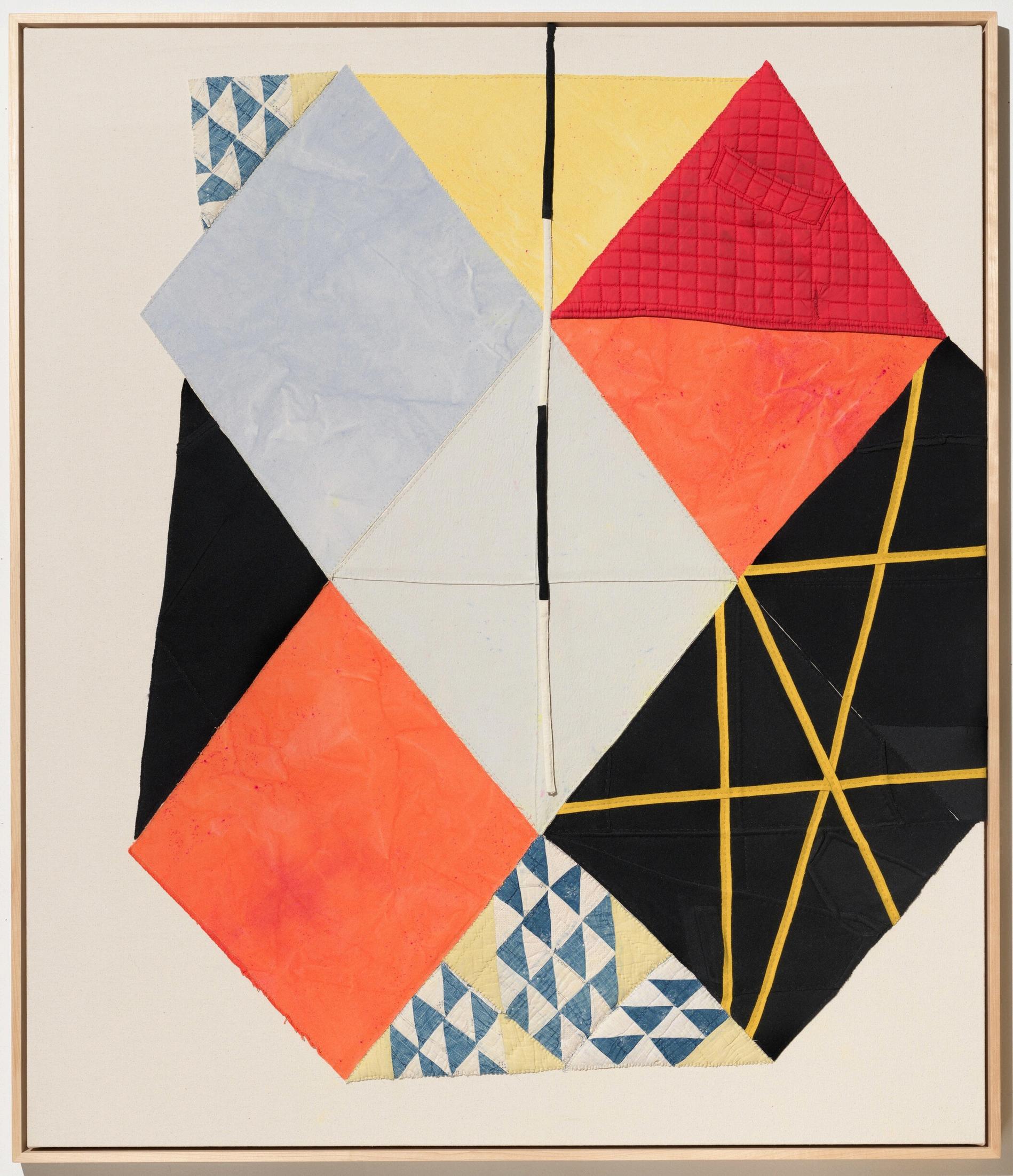
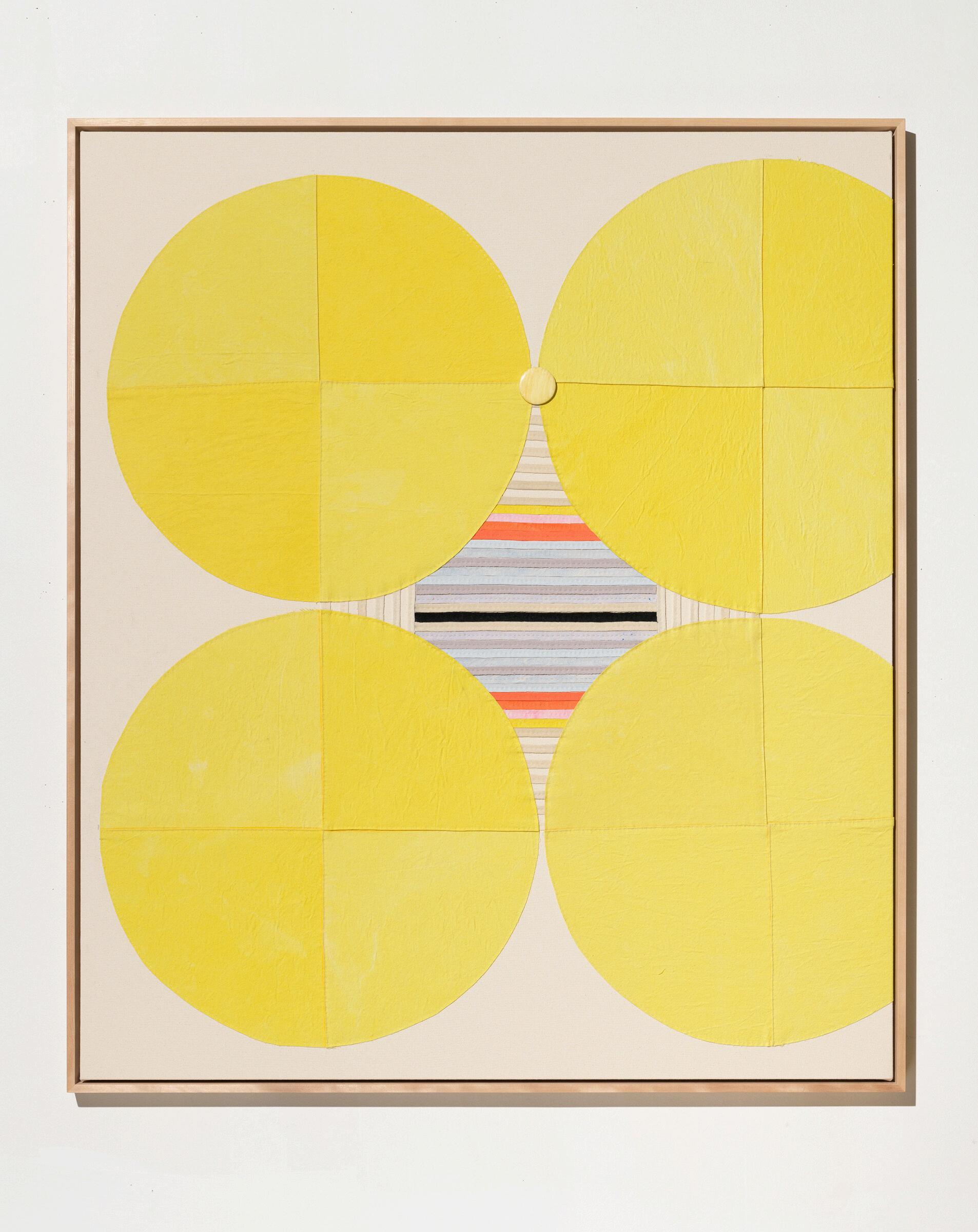
Dye, canvas, deconstructed clothing, and deadstock wool, and button
57.75 x 49.75 inches, framed
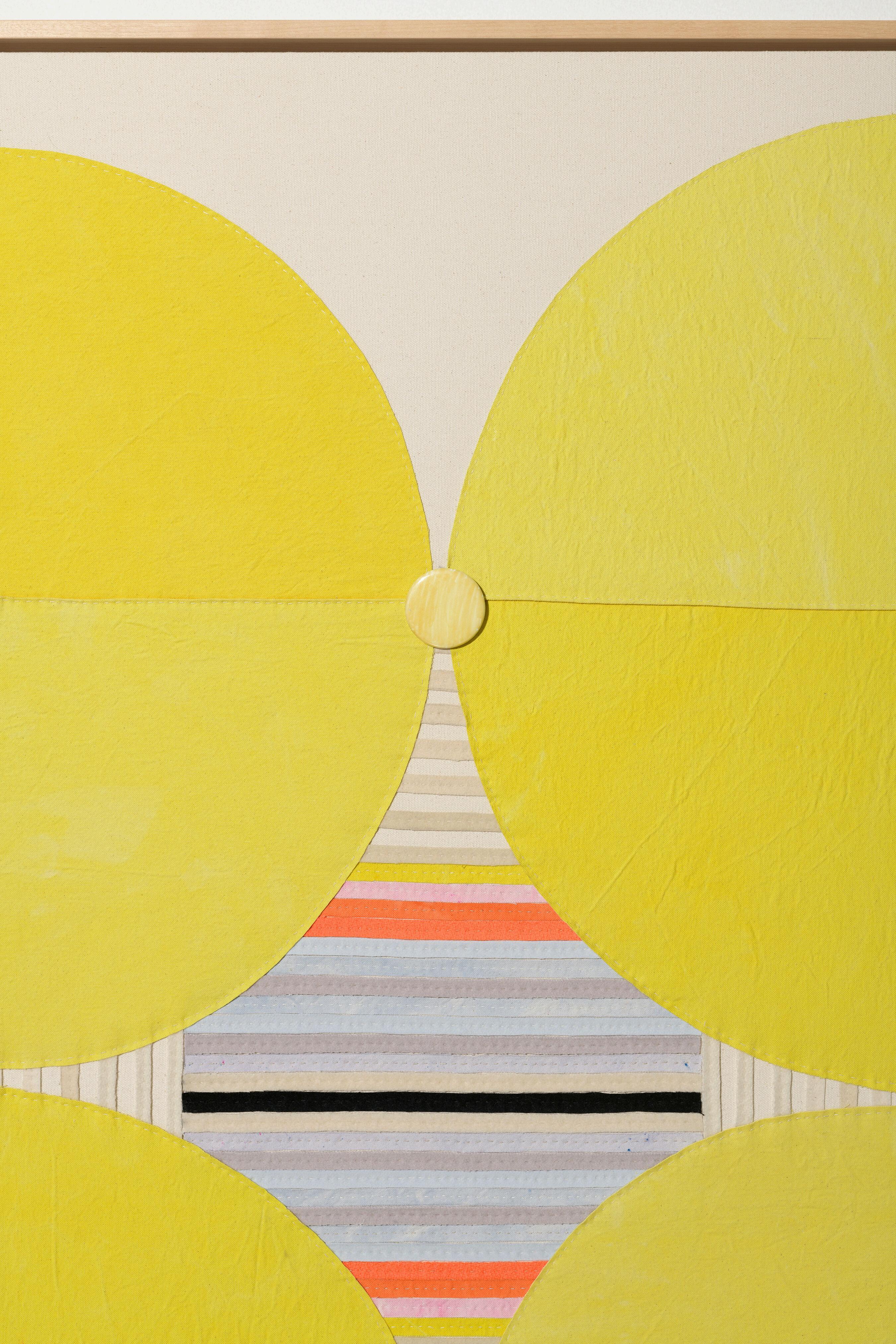
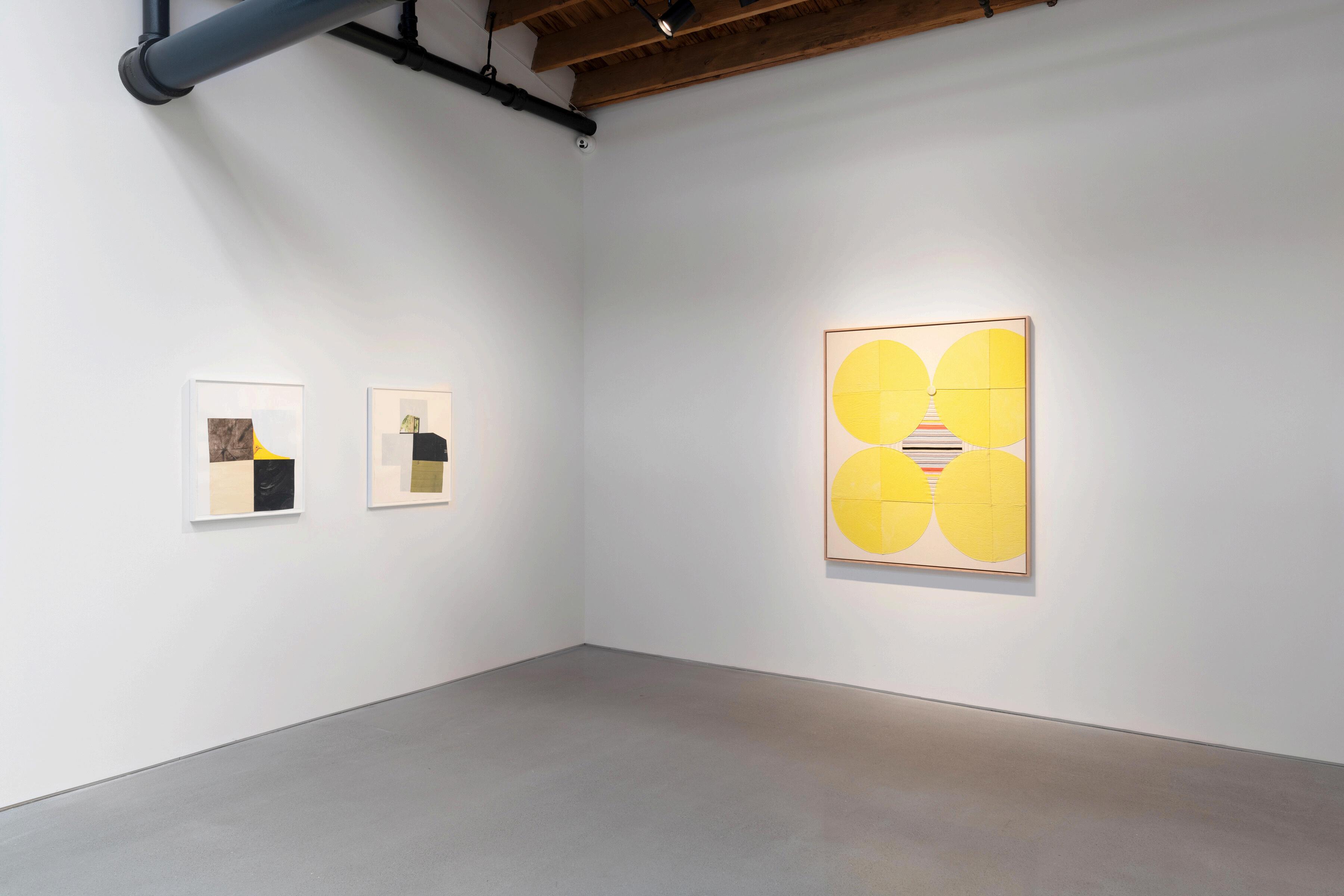

Paintings for Birds no 6, 2024
Gouache, paper, and found material on Lanaquarelle paper
28 x 24 5 inches, framed
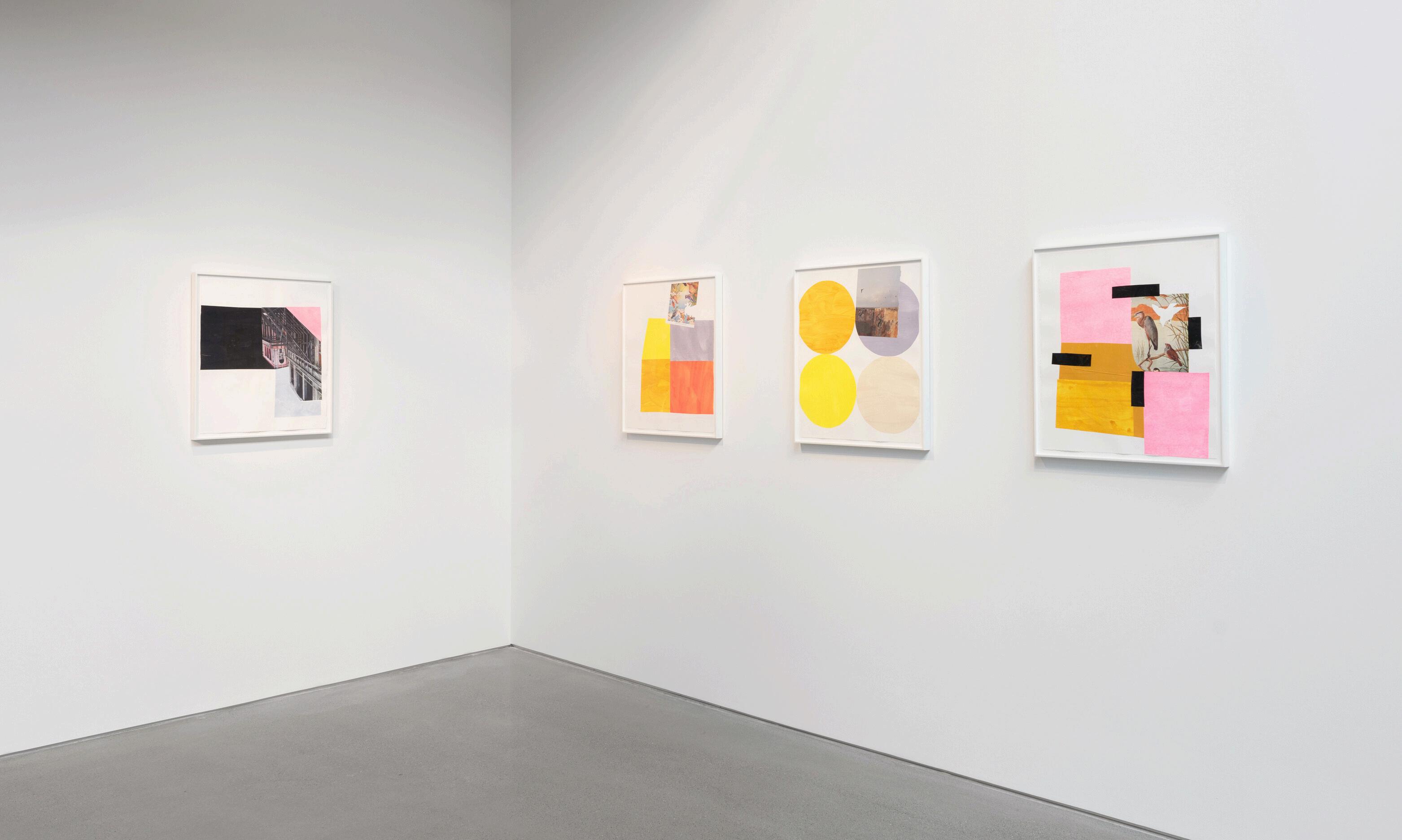

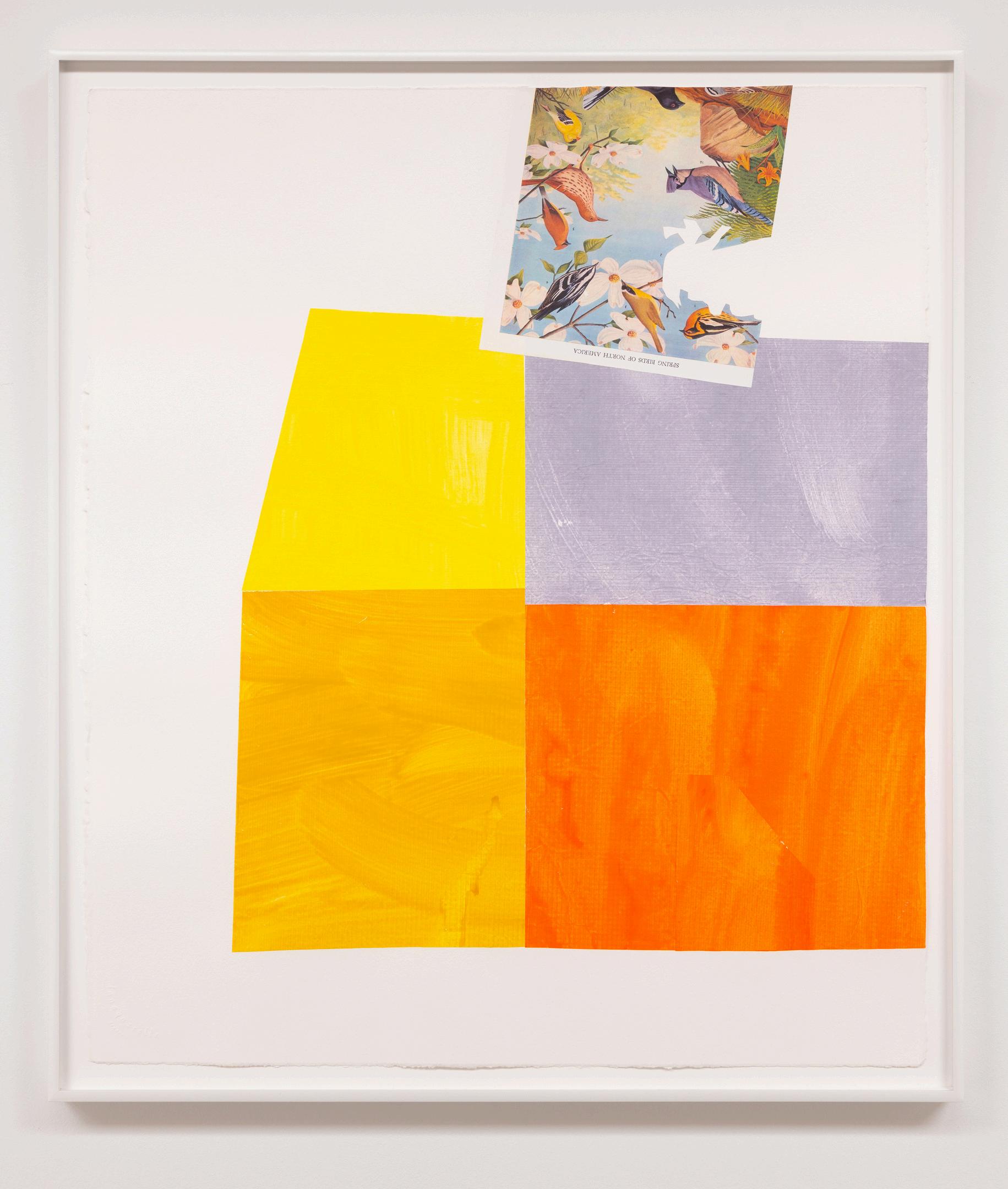
Paintings for Birds no 10, 2024
Gouache, paper, and archival inkjet print on paper on Lanaquarelle paper
28 x 24 5 inches, framed
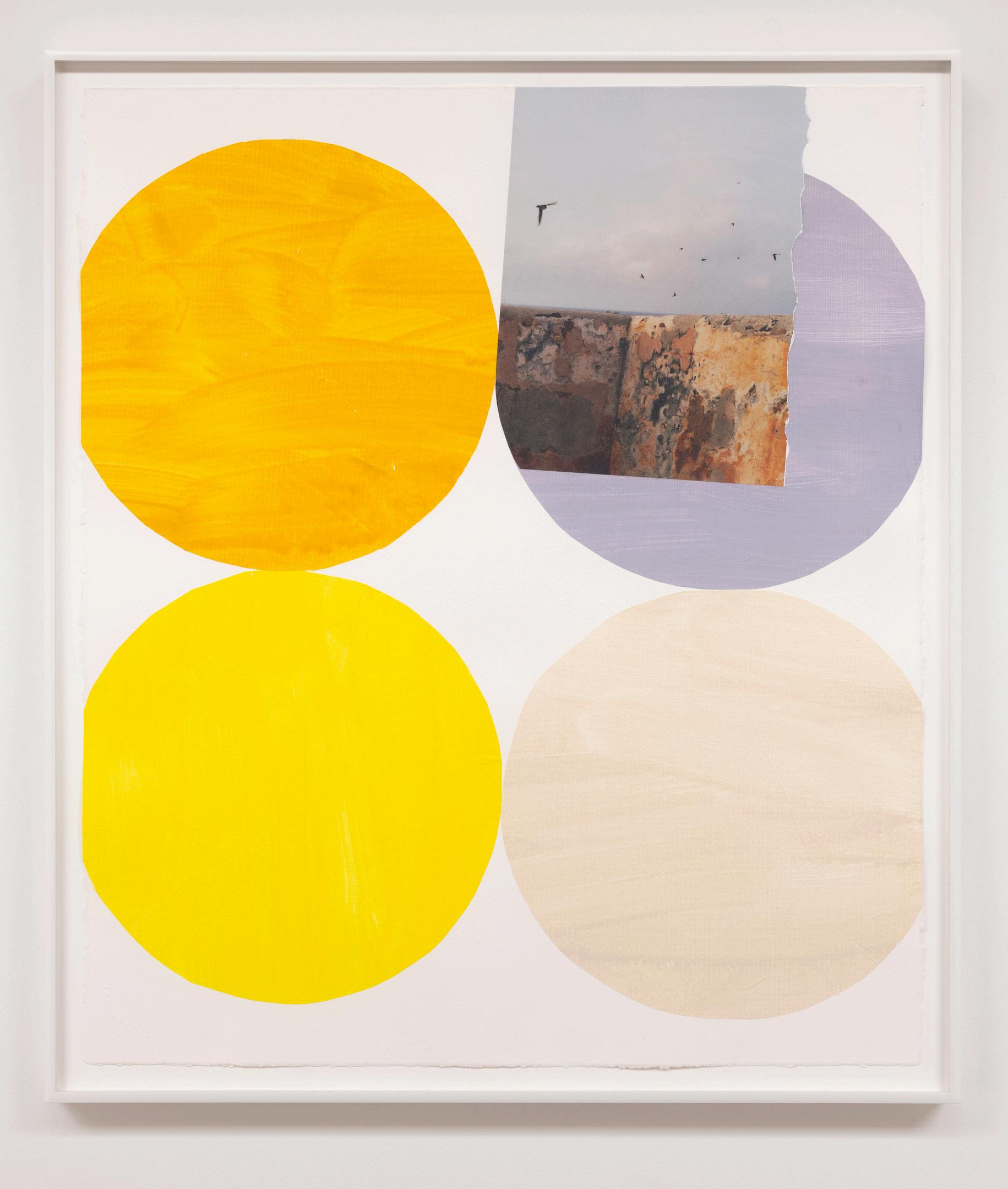
Paintings for Birds no 8, 2024
Gouache, paper, and found material on Lanaquarelle paper
28 x 24 5 inches, framed
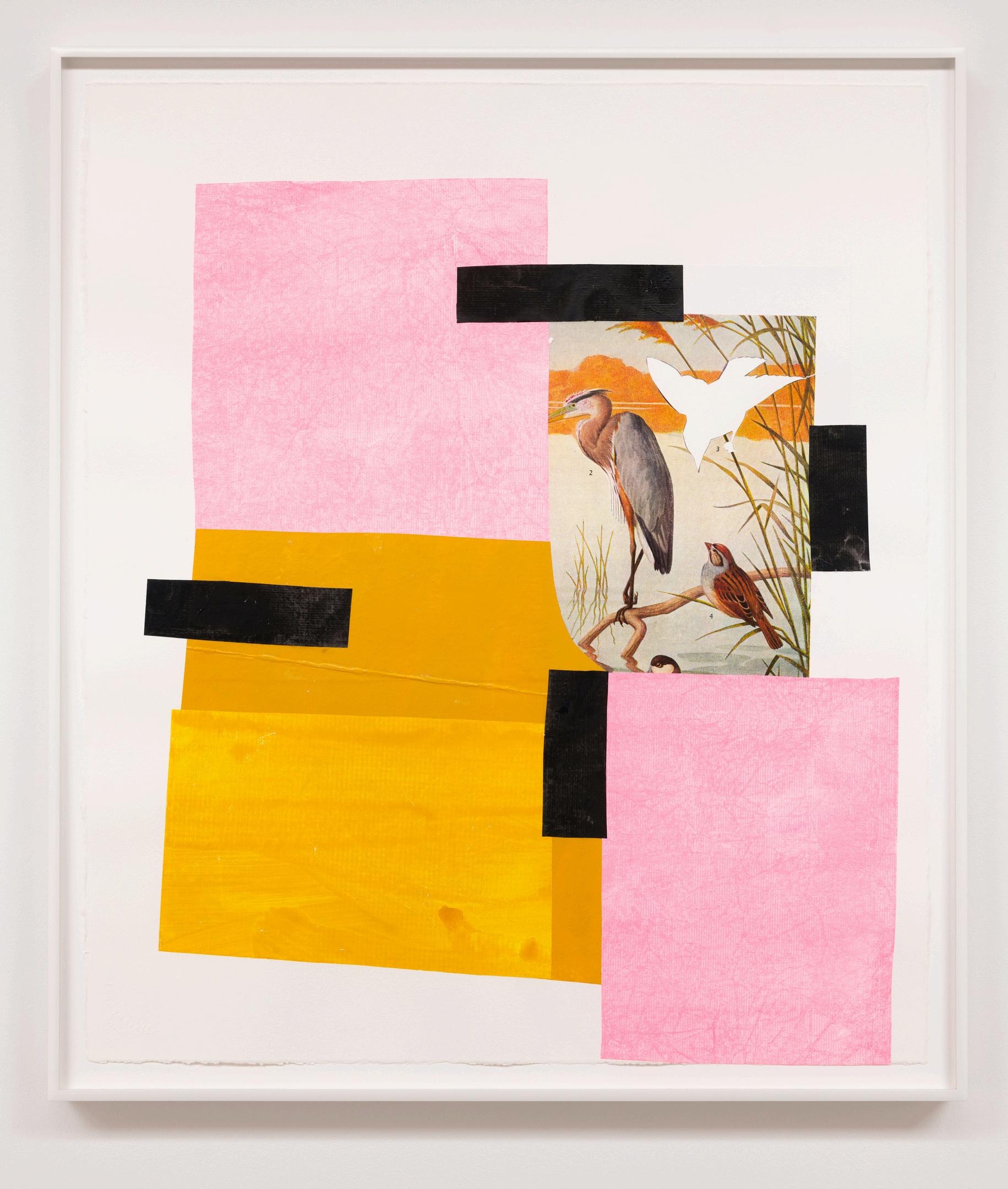
Paintings for Birds no 7, 2024
Gouache, paper, and archival inkjet print on paper on Lanaquarelle paper
28 x 24 5 inches, framed

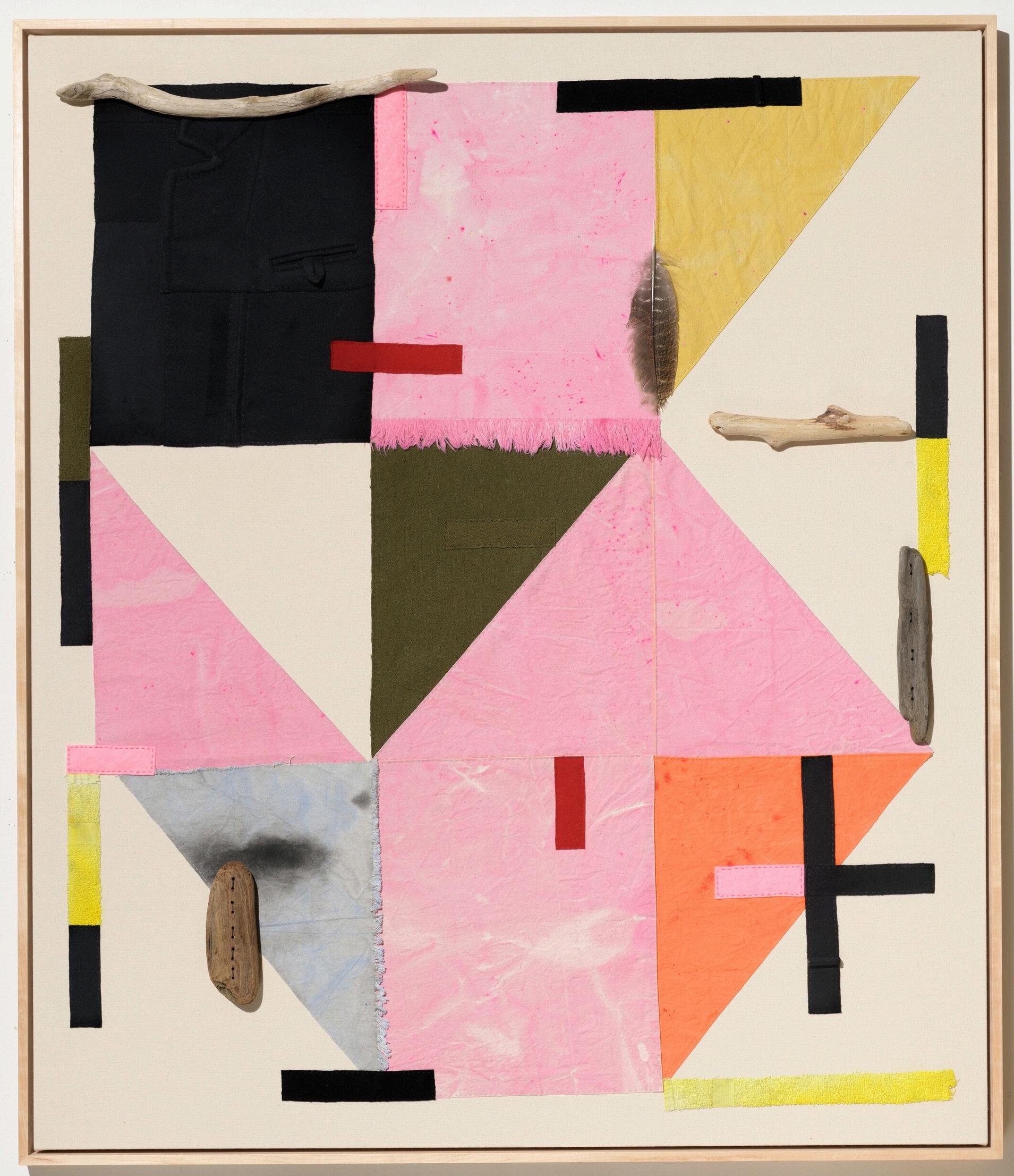
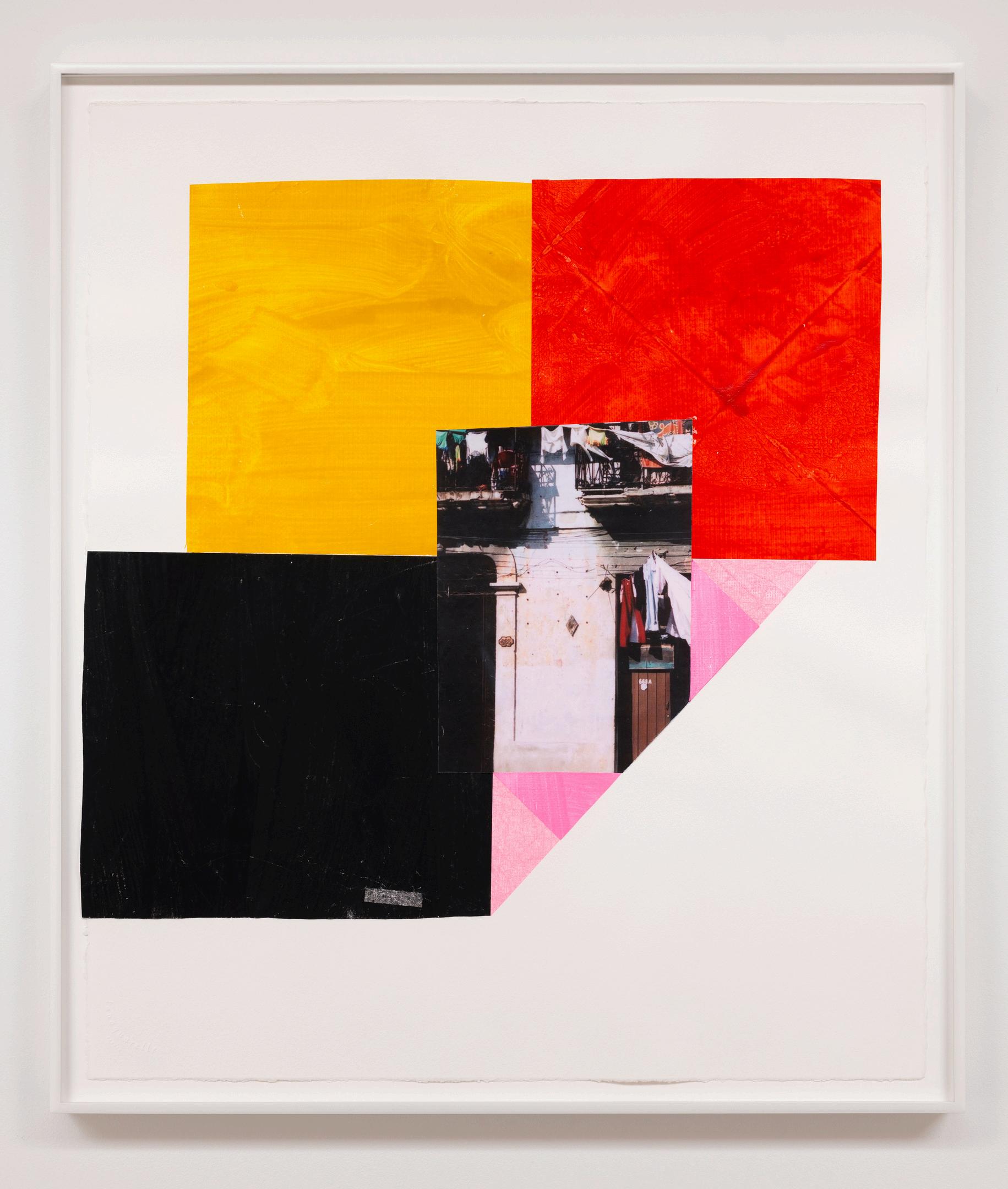
Paintings for Birds no 1, 2024
Gouache, paper, and archival inkjet print on paper on Lanaquarelle paper
28 x 24 5 inches, framed
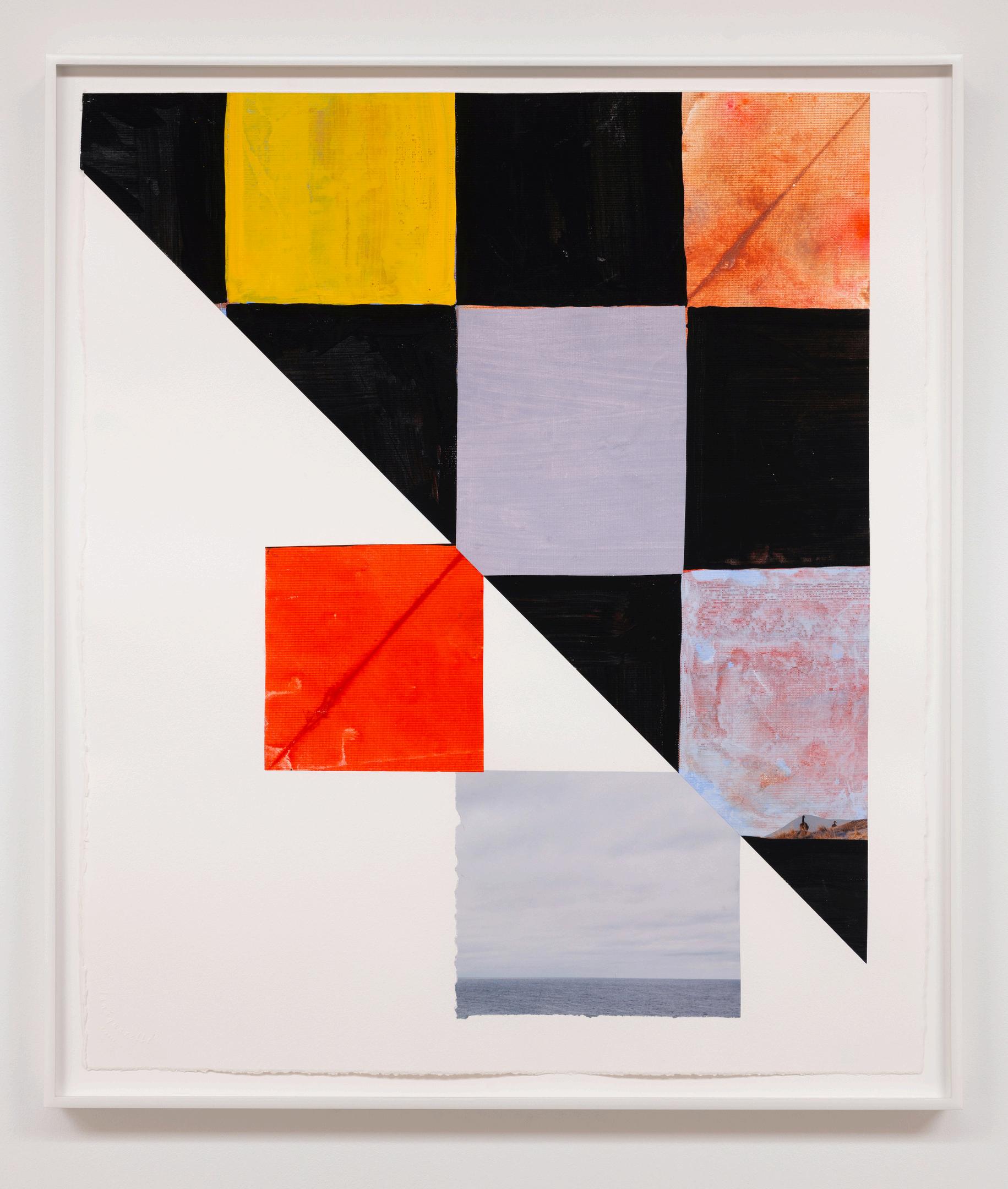
Paintings for Birds no 2, 2024
Gouache, paper, and archival inkjet print on paper on Lanaquarelle paper
28 x 24 5 inches, framed

Paintings for Birds no 12, 2024
Gouache, paper, and archival inkjet print on paper on Lanaquarelle paper
28 x 24 5 inches, framed
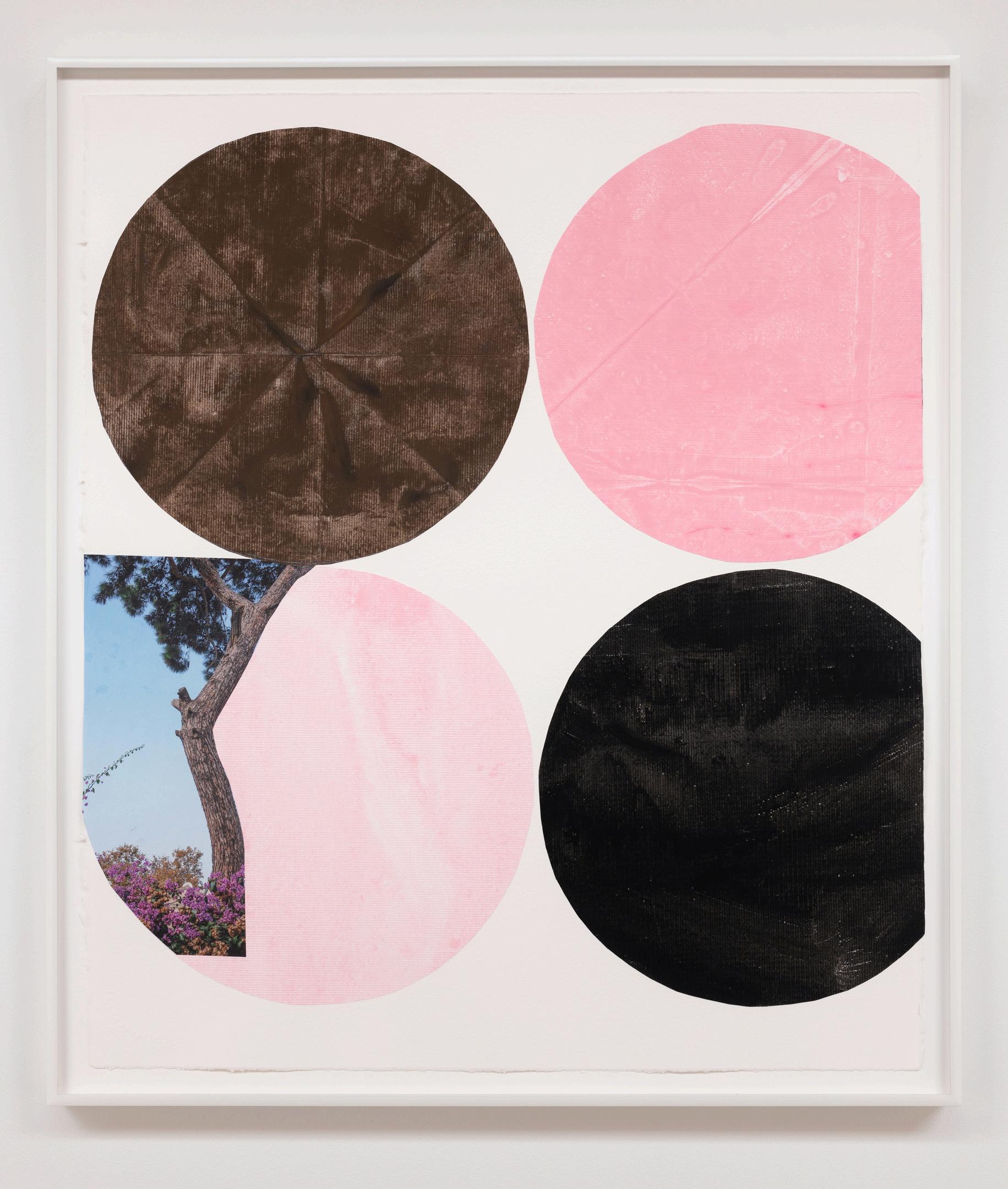
Paintings for Birds no 4, 2024
Gouache, paper, and archival inkjet print on paper on Lanaquarelle paper
28 x 24 5 inches, framed

Paintings for Birds no 9, 2024
Gouache, paper, and archival inkjet print on paper on Lanaquarelle paper
28 x 24 5 inches, framed
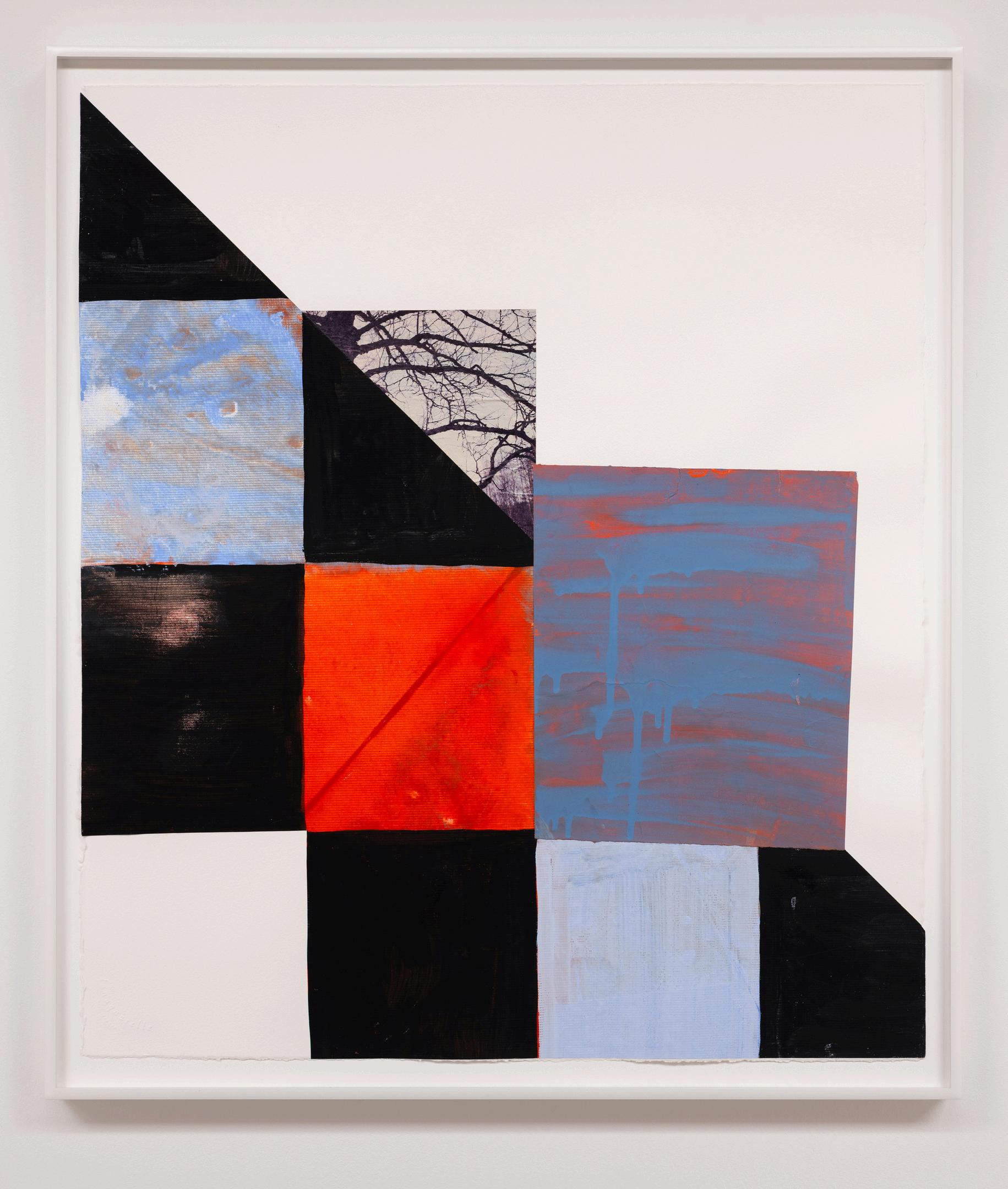
Paintings for Birds no 11, 2024
Gouache, paper, and archival inkjet print on paper on Lanaquarelle paper
28 x 24 5 inches, framed

GLAZIER no 1, 2024

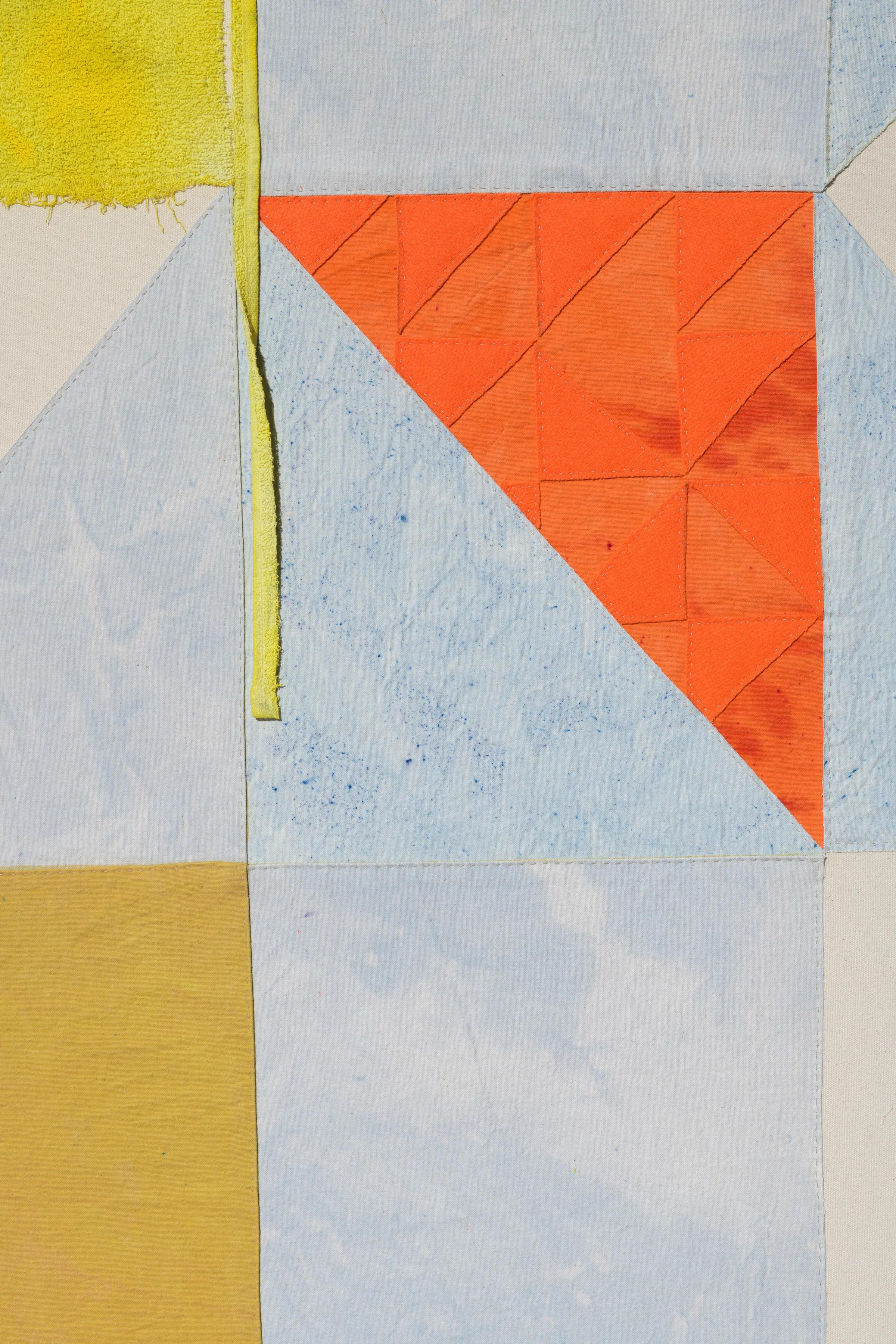
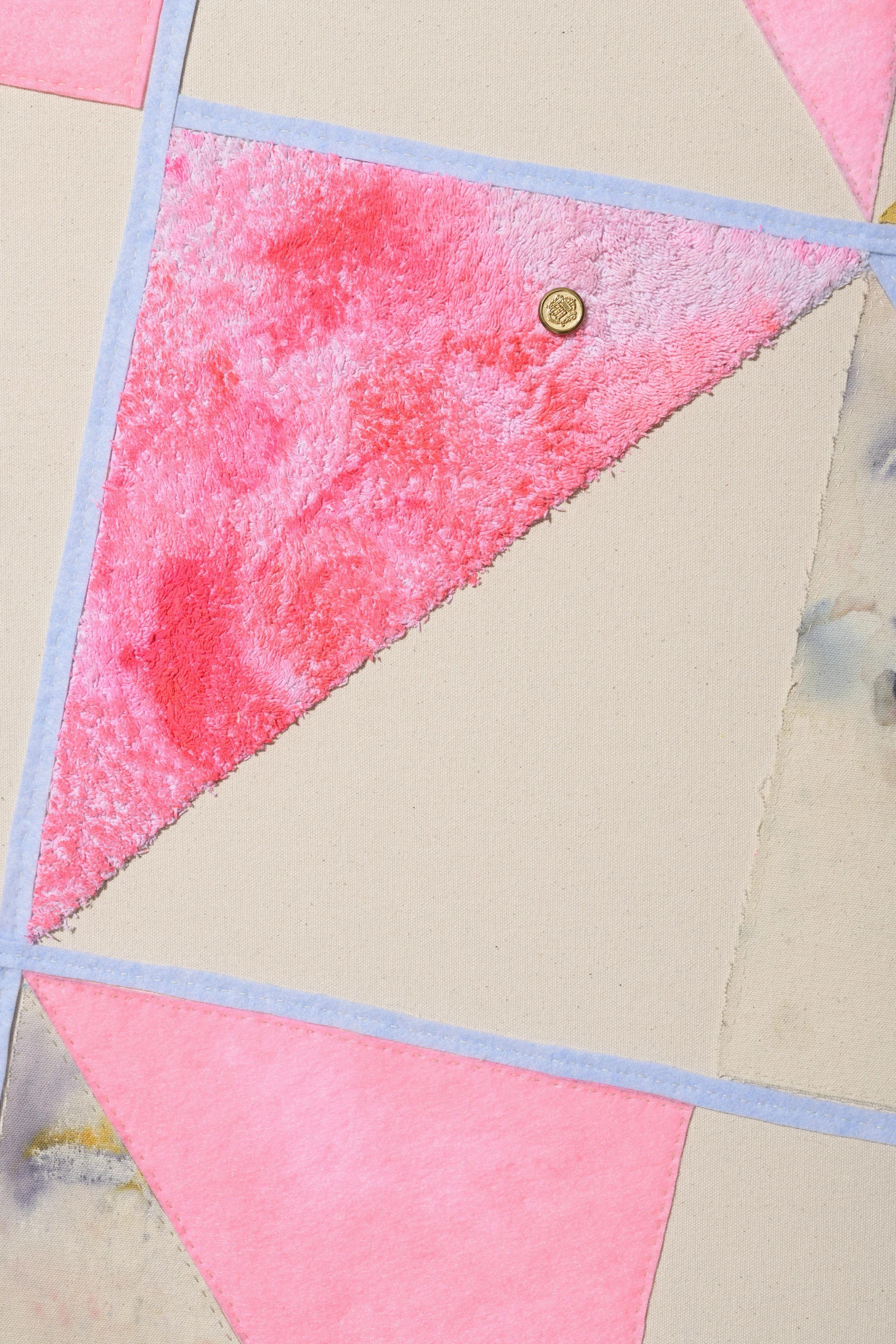
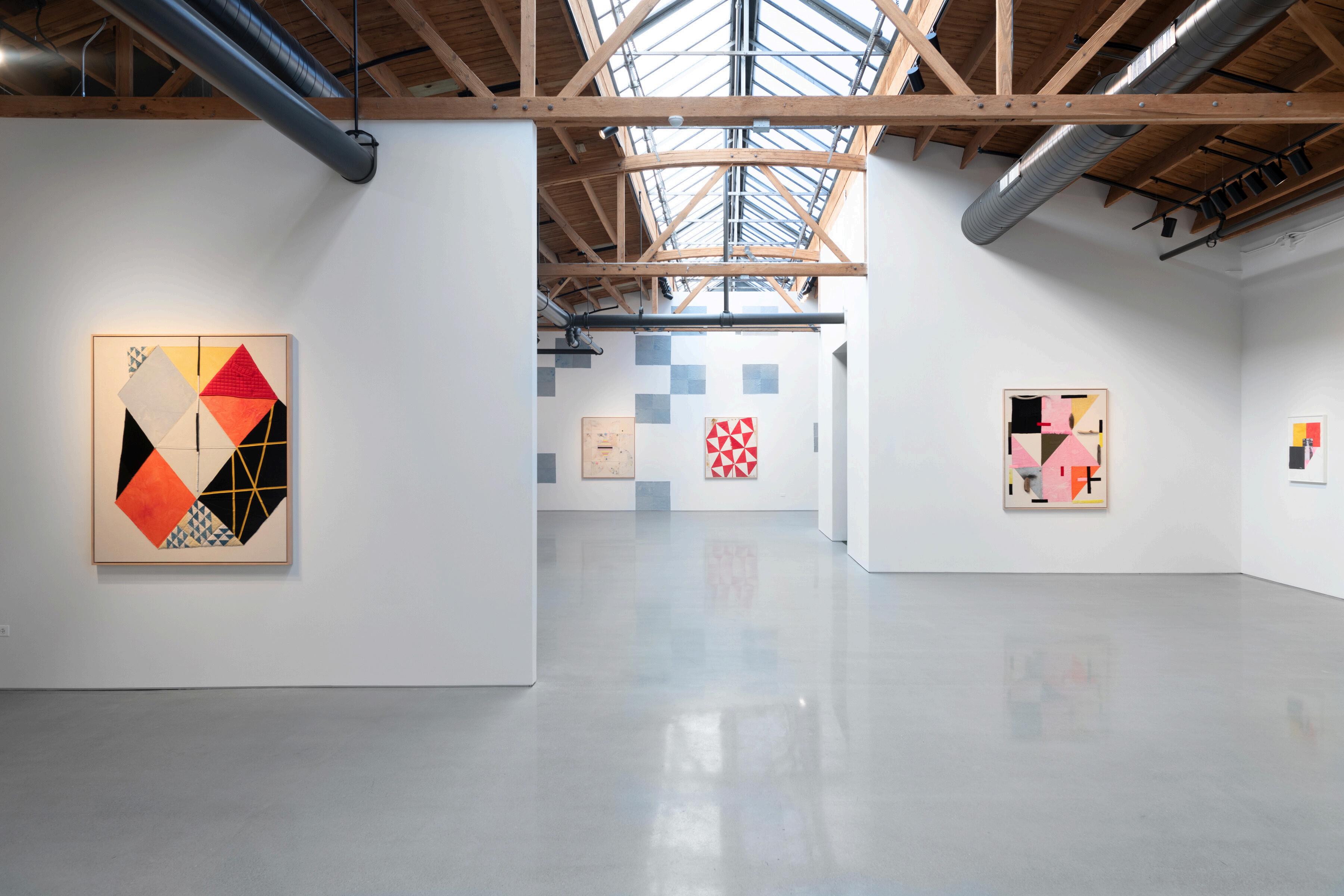


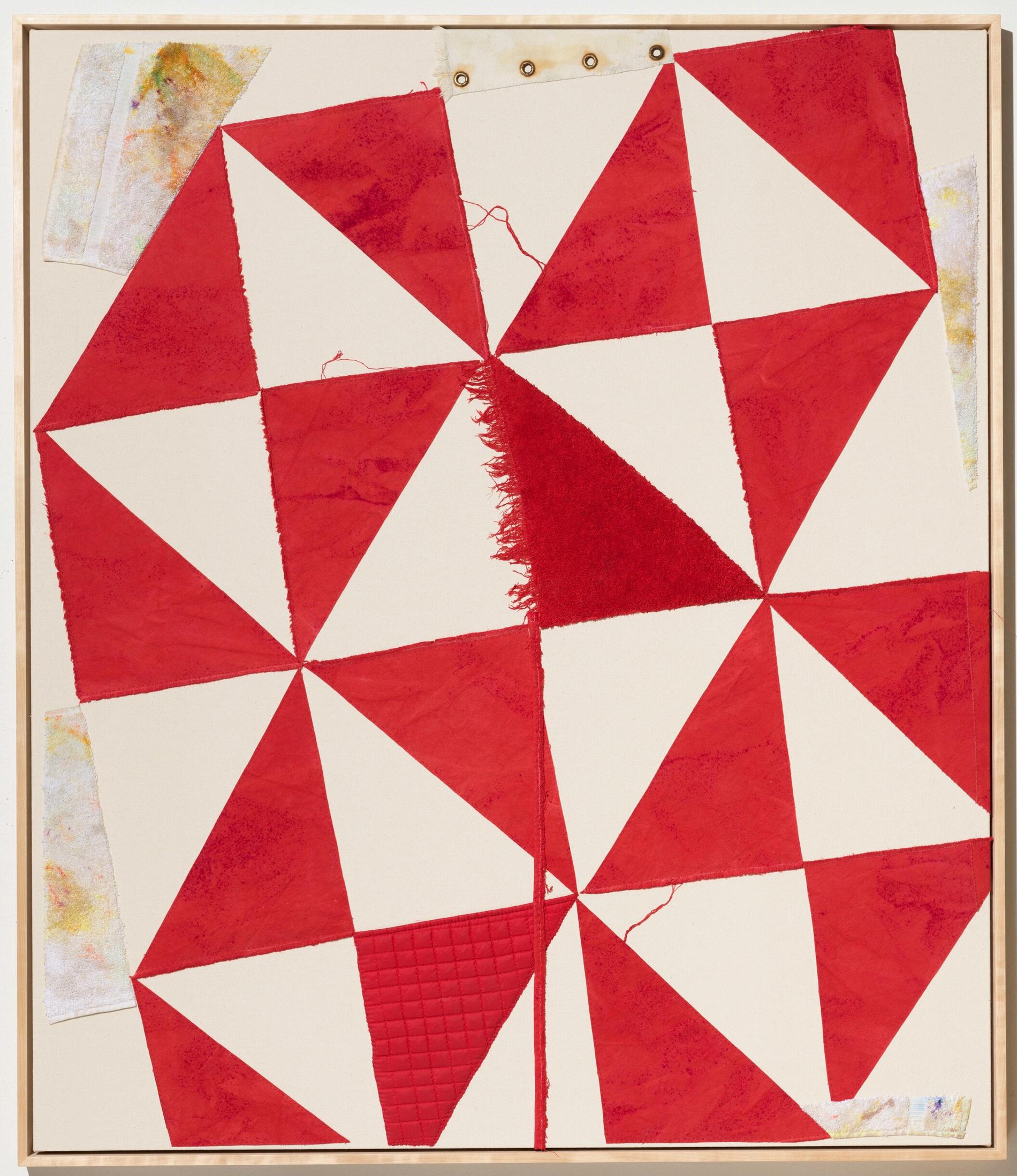

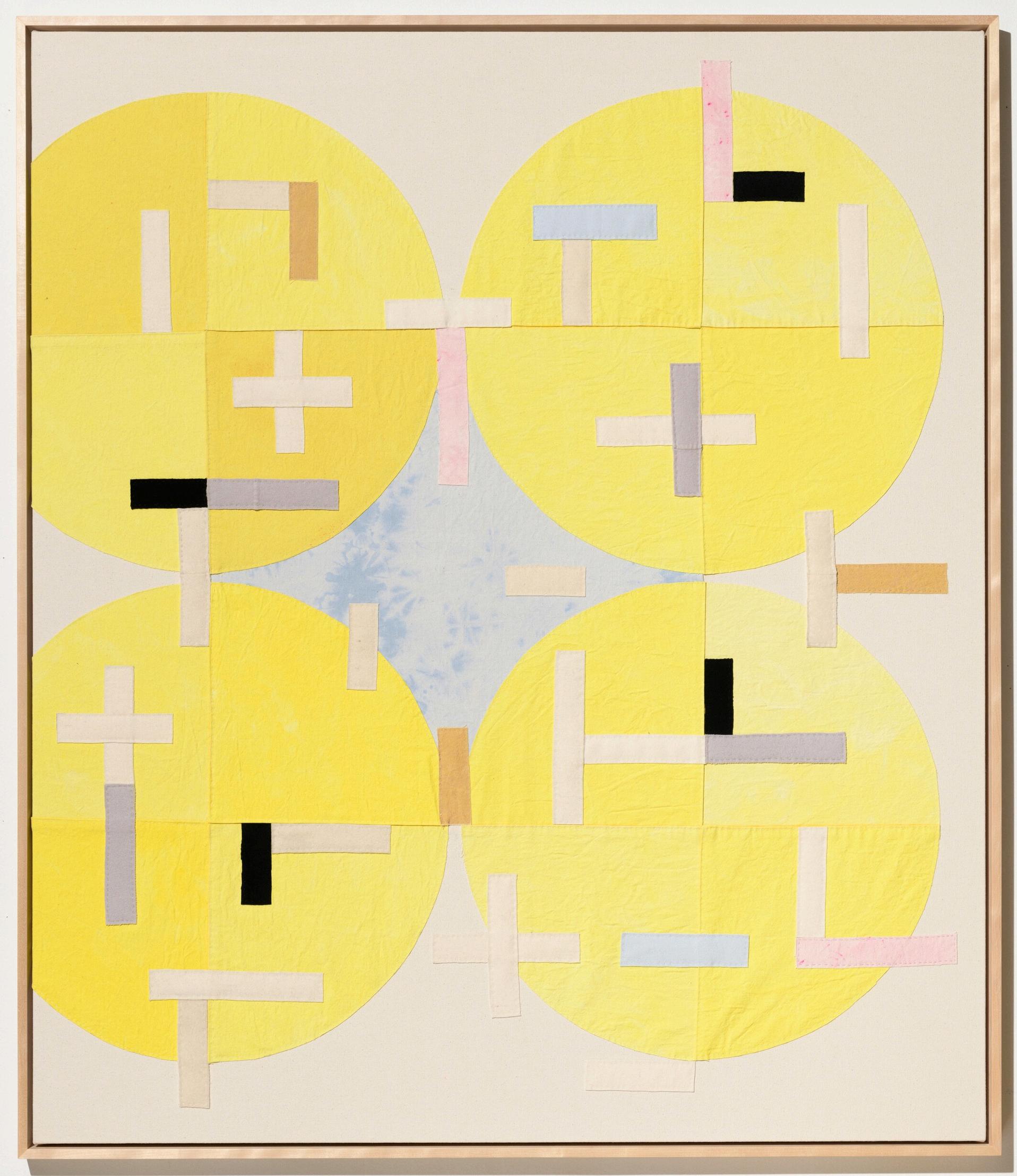

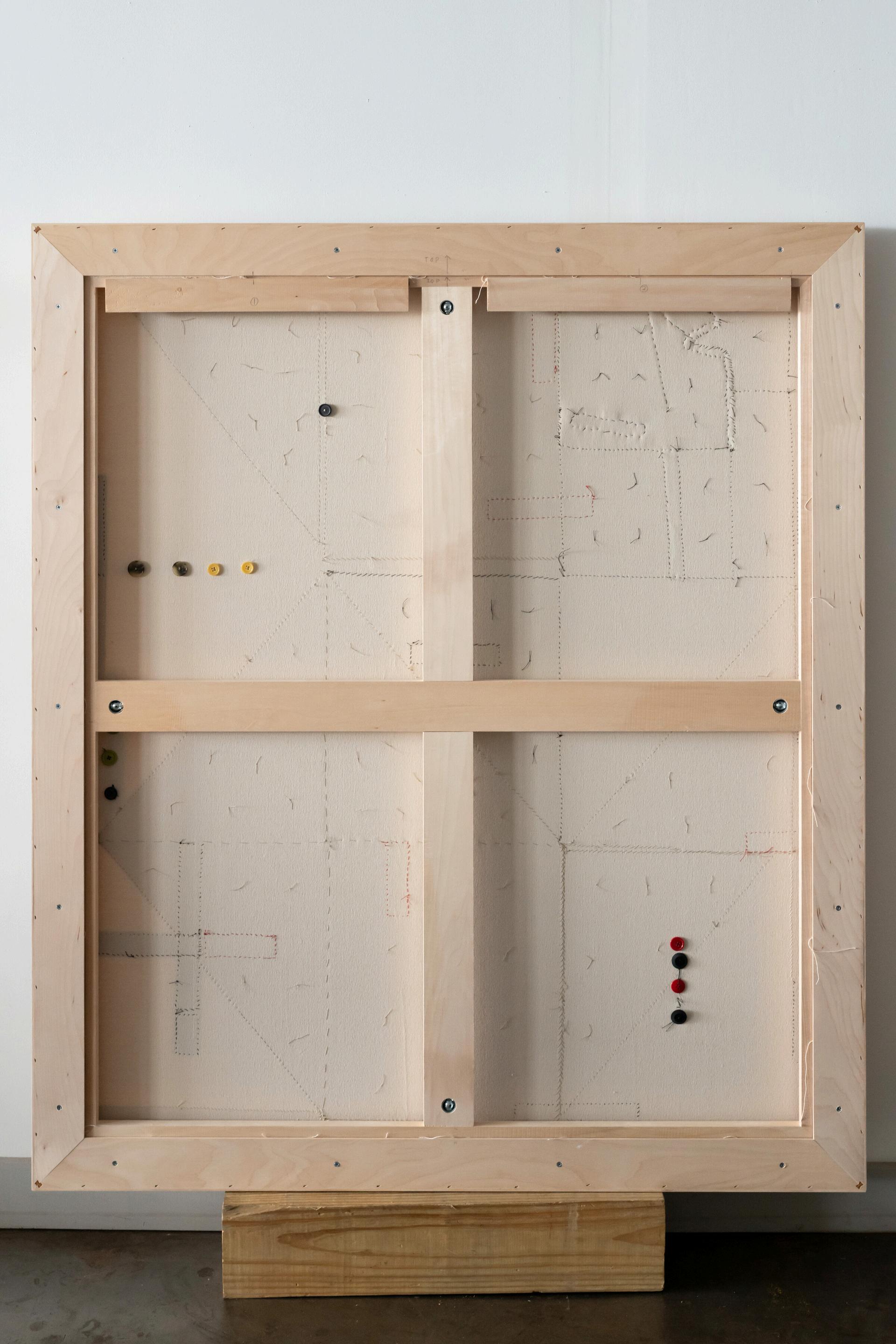
Eula Bliss, Having and Being Had, (New York, Riverhead Books, 2020)
W E B DuBois, Data Portraits, Visualizing Black America, (New York, Princeton Architectural Press, 2018)
Thich Nhat Hanh, The Other Shore, (Berkeley, CA, Parallax Press, 2017)
Teruyoshi Hayashida, (with Ishizu, Kurosu, and Hasegawa), Take Ivy, (Brooklyn, NY, Powerhouse Books, 2006)
Charlotte Healy & Krupp, Walburga, et al, Sophie Taeuber-Arp: Living Abstraction, (New York, The Museum of Modern Art, 2021)
Sheila Heti, Pure Color, Macmillan, (New York, Picador, 2023)
Jhumpa Lahiri, Roman Stories, (New York, Knopf, 2023)
Peter Schjeldahl, Hot, Cold, Heavy, Light, 100 Art Writings 1988-2018, (New York, Abrams Press, 2019)
Sofi Thanhauser, Worn, A People’s History of Clothing, (New York, Vintage, 2023)
Rumi, Unseen Poems, (New York, Alfred Knopf, 2019) (Jalāl ad-Dīn Muhammad Balkhī writings 1207-1273 Translations into English)

